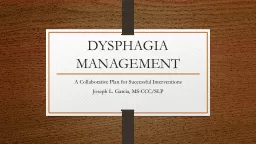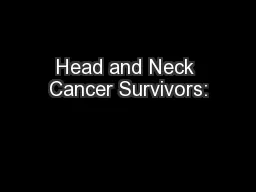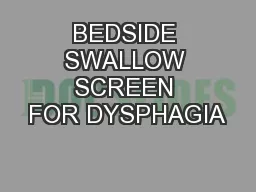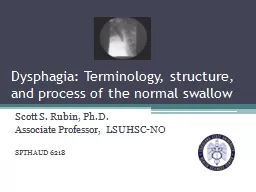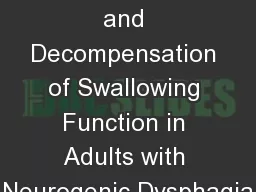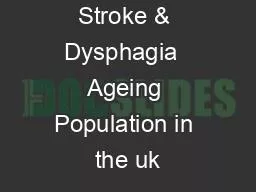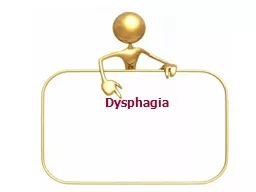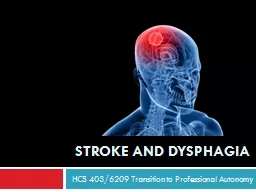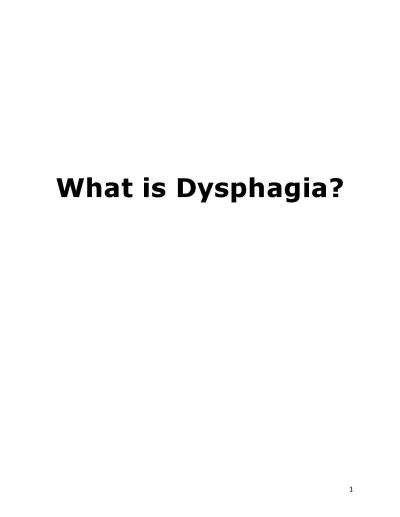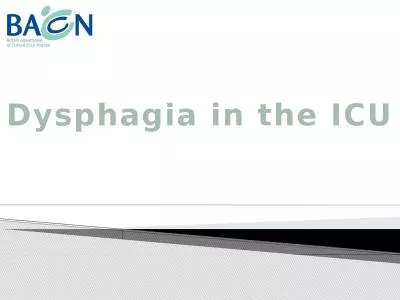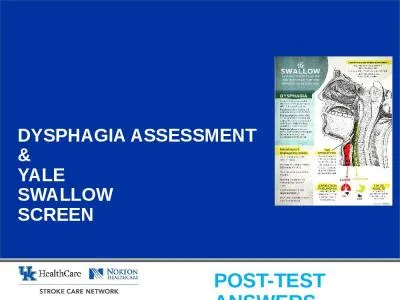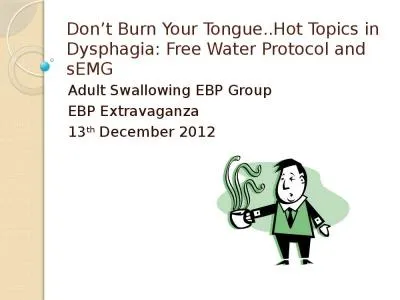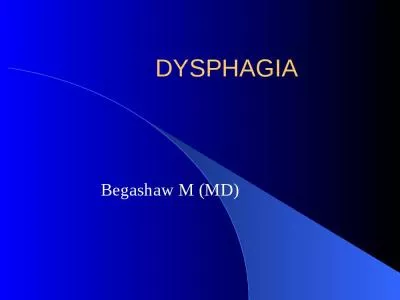PPT-DYSPHAGIA MANAGEMENT
Author : giovanna-bartolotta | Published Date : 2016-09-12
A Collaborative Plan for Successful Interventions Joseph L Garcia MSCCCSLP STAGE ONE THE ORAL PREP STAGE Begins as soon as food or liquid reaches the lips Labial
Presentation Embed Code
Download Presentation
Download Presentation The PPT/PDF document "DYSPHAGIA MANAGEMENT" is the property of its rightful owner. Permission is granted to download and print the materials on this website for personal, non-commercial use only, and to display it on your personal computer provided you do not modify the materials and that you retain all copyright notices contained in the materials. By downloading content from our website, you accept the terms of this agreement.
DYSPHAGIA MANAGEMENT: Transcript
Download Rules Of Document
"DYSPHAGIA MANAGEMENT"The content belongs to its owner. You may download and print it for personal use, without modification, and keep all copyright notices. By downloading, you agree to these terms.
Related Documents

